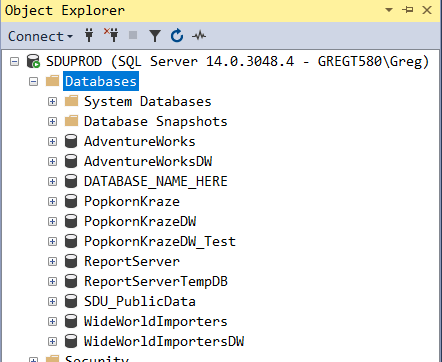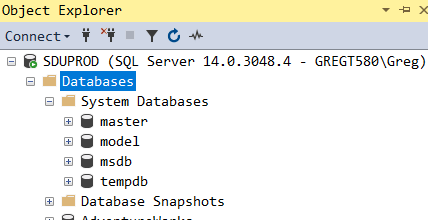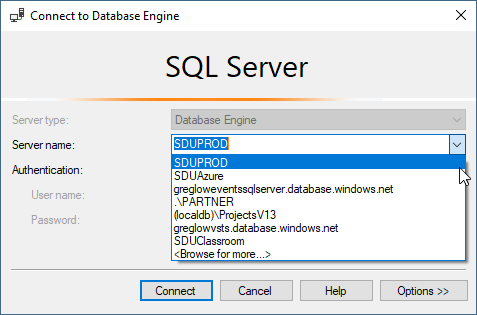Shortcut: Using Quick Launch in SQL Server Management Studio
In SQL Server Management Studio (SSMS) for SQL Server 2016, a new search tool called Quick Launch was added. It’s this bar up the top:

Note that there’s another bar underneath it to the left. That’s not the Quick Launch bar. That’s the Find bar.
While the Find bar is useful for searching for text within queries, etc., the Quick Launch bar is useful for searching within SSMS itself.
2019-02-28



